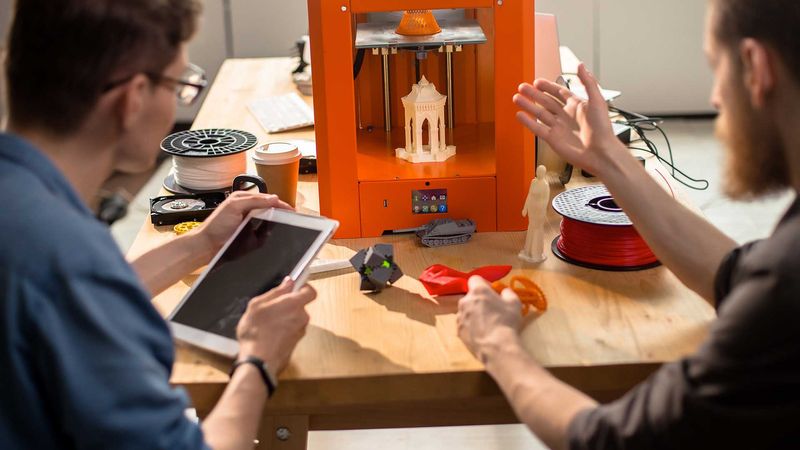What Is FDM 3D Printing
The FDM process creates plastic 3D models by superimposing multiple layers of melted thermoplastic polymer material into a predefined area via a computer controlled printing nozzle.

This article was first published on
prototypehubs.comFused Deposition Modeling (FDM), sometimes referred to as Fused Filament Fabrication (FFF), is one of the most popular types of extrusion 3D printing. The FDM process creates plastic 3D models by superimposing multiple layers of melted thermoplastic polymer material into a predefined area via a computer controlled printing nozzle. While FDM may not be the strongest, fastest, or most advanced example of 3D printing technology, it is one of the most affordable and is ideal for producing concepts and prototypes.
A direct drive or Bowden type extruder is used for FDM, depending on the 3D printer type and setup. Thermoplastic polymer materials in the form of a continuous filament are fed from the extruder cold end to the hot end. The hot end contains an interchangeable nozzle that can be sized according to the specifications of the printed object. To control the movement and placement of the nozzle, the printer is equipped with a gantry system, generally powered by individual stepper motors. These motors make sure the extruded filament is laid down in the correct position for each printed layer. With every pass, the nozzle lays the filament down on top of the previous layer, gradually building up the required shape of the object.
With FDM technology, the quality of the 3D printed object depends on various parameters such as layer height, nozzle diameter, and the use of support materials. Because of the layered build process, support structures must be printed under high degree overhangs and large unsupported bridges to stop the extruded filament from sagging. Although printed supports can increase post-processing time, they are often necessary to produce high quality prints. Because FDM uses one single-point nozzle to extrude a single layer of material at a time, the finished object contains layer lines that are often visible on the exterior surfaces. These layer lines can be removed with various post-processing methods.
FDM offers a wide variety of materials to print with, including flexible thermoplastics; objects can be either rigid or flexible. FDM printing uses a wide variety of high-performance, engineering, and basic filaments that allow for the practical application and use of each printed object to be uniquely different. Available filaments include ABS, PLA, PETG, Nylon, and PEEK, to name but a few, and most come in a wide variety of colors. Then there are TPU plastics, which tend to be the most flexible and may require specific types of extruders and hot ends to print properly. The mechanical properties of FDM objects are anisotropic because of the layered build process.
The benefits of FDM include the cost-effectiveness for producing prototypes and functional objects, the ability to create complex new designs that are not possible with traditional manufacturing technologies, and the wide selection of build materials – for applications ranging from basic to high-performance. Along with these great benefits, however, FDM does have its limitations, namely its anisotropic mechanical behaviour, the visible layer lines that may require extra post-processing time to remove, and lower dimensional accuracy and resolution when compared with other 3D printing technologies.